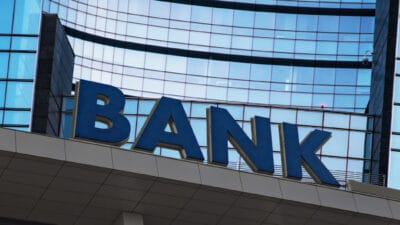The Westpac Banking Corp (ASX: WBC) share price will be on watch this morning.
This follows the release of the banking giant's highly anticipated half year results.
How did Westpac perform in the first half?
For the six months ended 31 March, Westpac reported a statutory net profit after tax of $3,443 million. This was an increase of 189% over the prior corresponding period and 213% over the second half of FY 2020.
It was a similar story for its cash earnings, which came in at $3,537 million for the half. This was a 256% increase over the prior corresponding period and a 119% lift over the second half of FY 2020. This equates to cash earnings per share of 97 cents.
This comprises Consumer earnings of $1,592 million (up 8%), Business earnings of $920 million (up 92%), Institutional earnings of $230 million (up 56%), New Zealand earnings of NZ$583 million (up 98%), and Specialist earnings of $134 million (up 44%).
Positively, even if you adjust for notable items from all periods, Westpac's earnings were strong during the half. Excluding notable items, Westpac reported cash earnings of $3,819 million, up 60% year on year and 35% on the second half of FY 2020.
Other key metrics of note were its return on equity, which increased to 10.2% from 2.9%, and its net interest margin of 2.09%. While the latter was down 4 basis points from the prior corresponding period, it was up 6 basis points from the prior half.
Overall, this allowed the Westpac board to declare a fully franked interim dividend of 58 cents per share. This represents a payout ratio of ~60%.
"Promising start"
Westpac's CEO, Peter King, was pleased with the way the bank has started the financial year.
He said "It has been a promising start to the year with increased cash earnings, growth in mortgages and continued balance sheet strength. First half earnings were considerably higher than the prior corresponding period, mainly due to an impairment benefit reflecting improved asset quality and a better economic outlook. Notable items were also lower."
Mr King also revealed that the bank's balance sheet has strengthened.
He explained: "We improved balance sheet strength, with our Common Equity Tier 1 capital ratio rising 153 basis points to 12.34 per cent."
Another positive that Mr King pointed out was the progress it has made with its new operating model.
Mr King said: "Importantly, we are beginning to see the benefits of our new operating model through improved performance. Our Australian mortgage book increased $2.6 billion over the past six months, with good growth in owner occupier loans partly offset by lower investor lending. Owner occupier loans increased 3 per cent, with first home buyers making up 13 per cent of new loans. We also managed margins well, with the margin up six basis points from Second Half 2020."
The chief executive also gave investors an update on how the bank is faring in respect to COVID-19.
He commented: "Australia and New Zealand have managed the pandemic well and we are proud to have helped so many customers return to full repayments. Stressed exposures to total committed exposures ended the half at 1.60 per cent, compared to 1.91 per cent at 30 September 2020. While the economic outlook is more positive, there is still some uncertainty and we have remained prudent in our impairment provisioning."
Cost cutting plan
As well as its results, the banking giant also revealed some major cost cutting plans over the coming years, which could give the Westpac share price a lift.
Westpac is targeting an $8 billion cost base by financial year 2024 to materially improve its efficiency. This compares to a ~$10.2 billion cost base in FY 2020.
Mr King explained: "A significant reset is required to ensure the business is cost competitive over the long term, particularly as we navigate the pandemic's recovery phase and an extended low-rate environment. The main drivers are simplification and digitisation as we exit all specialist businesses and accelerate our digital transformation."
"We need to do things differently to deliver a competitive cost base, including redesigning and digitising many of our processes. We expect costs to increase in FY21 as we deliver on our Fix priority, before starting to fall from FY22," he added.
The Westpac share price is up 27% since the start of the year.









